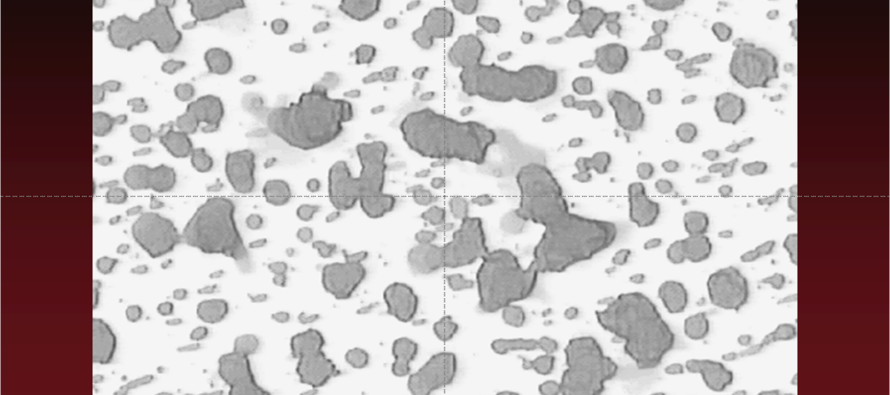Ground Speed Affects Spray Droplet Deposition

As we move into another growing season, now is the time to make sure that spray rigs and applicators are prepped and properly calibrated. Specific attention should be given to nozzles and screens to ensure they are not only clean and free of obstructions but are also of the recommended size or type for the intended application.
Air-induction (AI) nozzles have often been utilized for glyphosate applications to prevent herbicide drift. These AI nozzles produce coarse (350 to 450 µm) to very coarse droplets (450 to 550 µm) (Table 1). The range of droplet sizes produced by AI nozzles may be fine for the application of systemic herbicides, like glyphosate and 2,4-D, but may not be suitable for applications of contact herbicides and some insecticides.
Additionally, many producers have begun to utilize large, high-clearance sprayers for application of herbicides and other pesticides. These sprayers typically have large spray tank capacities (often over 1,000 gallons) and spray booms spreading up to 120 feet to cover more acres faster. Moreover, these sprayers can operate at speeds in excess of 20 MPH. To maintain desired spray volumes at higher speeds, the orifice of spray nozzles has to be increased, and this could influence droplet size and deposition.
As glyphosate-resistant weeds continue to spread, the need to utilize alternative herbicide modes of action has become increasingly important. Many of these alternative herbicides are postemergence, contact herbicides, such as Ignite® and Flexstar®. Contact herbicides require thorough coverage of the foliage to control weeds. Additionally, labels for contact herbicides often specify spray volumes of 10 to 20 gallons per acre (GPA) and medium droplet size with a volume median diameter (VMD) of 250 to 350 µm. Achieving these specifications will likely dictate avoiding AI nozzles, reducing ground speeds, and/or increasing spray volumes to ensure adequate coverage.
Studies were conducted at the Mississippi State University, Delta Research and Extension Center to determine if ground speed and spray volume impact spray droplet deposition and coverage. Spray volumes of 10, 15, and 20 GPA were evaluated while traveling at ground speeds of 5, 10, or 15 miles per hour (MPH). TeeJet® XR flat fan spray nozzles were used in these studies. Nozzle size ranged from 8002 to 8010, depending on speed and spray volume. Spray cards were used to capture and quantify droplet sizes and percent coverage.
As expected, spray coverage was greatest with the higher GPAs (15 and 20) and slower ground speeds (5 and 10). The spray volume most commonly used by producers is 10 GPA. At 10 GPA, VMD was 311, 329 and 478 at 5, 10 and 15 MPH, respectively (Photo 1, 2, 3). The slower ground speeds of 5 and 10 MPH produced droplet sizes conducive for contact herbicides (250 to 350 µm); whereas, the 15 MPH ground speed produced a droplet size outside the recommended range. The photos show the impact of increasing ground speed on both droplet size and coverage. This data suggests that higher ground speeds could negatively affect the deposition of spray droplets within the desired range of 250 to 350 µm. However, the negative effects of ground speed can be overcome to some extent when water volumes are increased. Droplet size improved to 497 and 385 µm when water volumes were increased to 15 and 20 GPA, respectively, at 15 MPH (Photo 4, 5).
As producers prepare for spray applications this growing season, it is imperative to consider proper spray nozzle selection. As ground speed increases, the orifice size of the nozzle must be increased to maintain the desired GPA. A larger orifice naturally produces larger droplets which equates to poor coverage with contact herbicides. With this in mind, it is recommended to make spray applications at a reasonable ground speed that allows for the use of a spray nozzle that will produce a medium droplet size conducive for contact herbicides.










Let me tell You a sad story ! There are no comments yet, but You can be first one to comment this article.
Write a comment